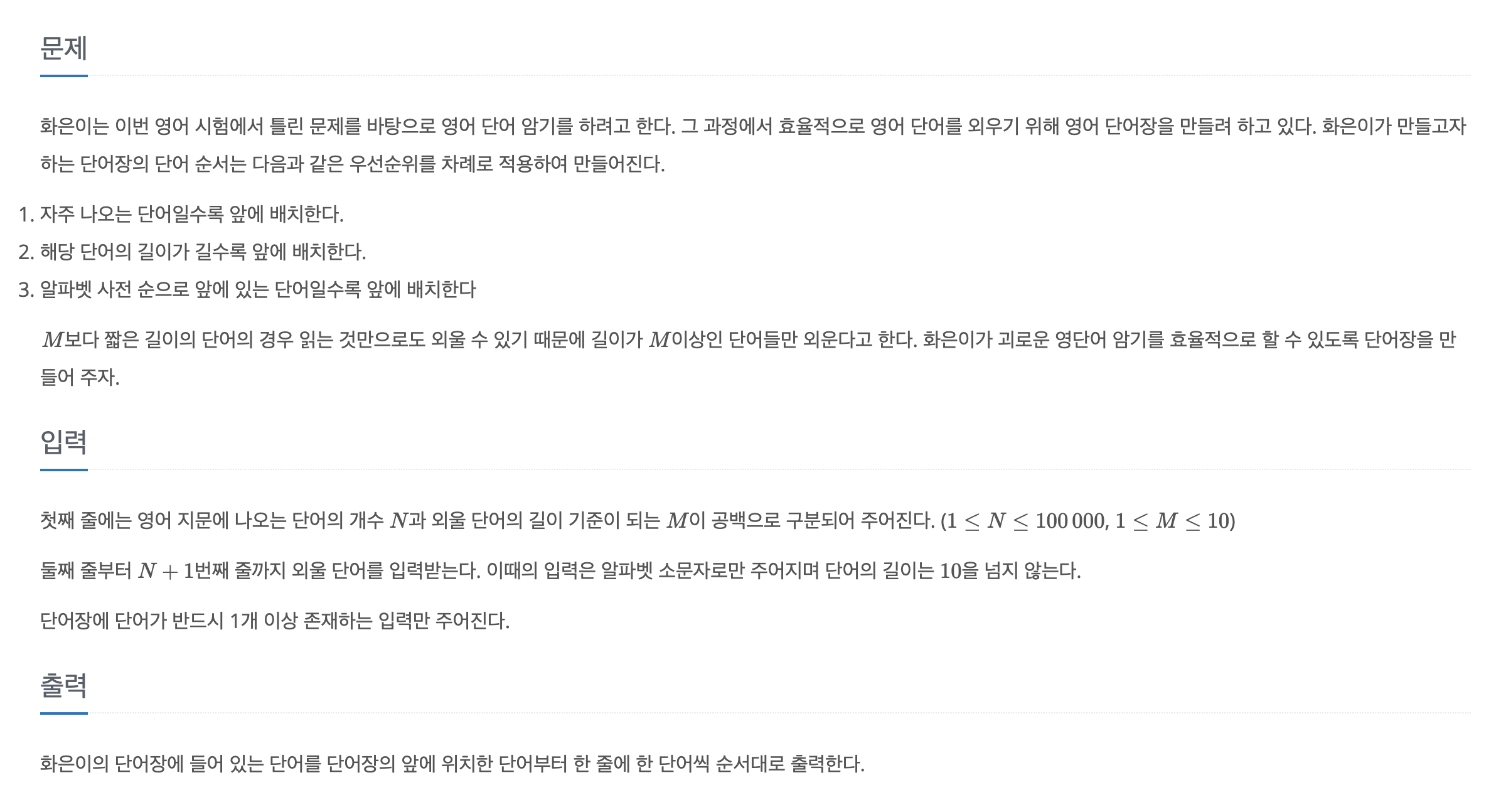우선순위 큐의 우선순위 정하기
우선순위 큐란?
Queue는 먼저 들어온 데이터가 먼저 나가는 FIFO(First In First Out) 형태의 자료구조이다.
Priority Queue는 먼저 들어온 데이터가 나가는 것이 아닌 우선 순위가 높은 데이터 순서로 나가게 되는 자료구조이다.
우선 순위 지정
그러면 우선 순위를 어떻게 정하는 것이 중요하다. 기본적으로는 오름차순으로 정렬된다.
PriorityQueue<String> queue = new PriorityQueue<>();
queue.add("A");
queue.add("E");
queue.add("F");
queue.add("C");
queue.add("B");
while (!queue.isEmpty()) {
System.out.println(queue.poll()); // ABCEF 순서로 출력
}
내림차순으로 정렬하려면 java.util.Collections에서 제공해주는 Collections.reverseOrder()를 사용하면 된다.
PriorityQueue<String> queue = new PriorityQueue<>(Collections.reverseOrder());
queue.add("A");
queue.add("E");
queue.add("F");
queue.add("C");
queue.add("B");
while (!queue.isEmpty()) {
System.out.println(queue.poll()); // FECBA 순서로 출력
}
복잡한 우선 순위 지정
이 포스트를 쓴 이유이기도 하다. 단순히 오름차순, 내림차순 정렬은 간다하지만 정렬 조건이 여러개 이거나 큐에 있는 데이터의 일부를 조건으로 정렬할 때가 복잡할 것이다.
하지만 자바에서 제공하는 Comparator 인터페이스를 구현하면 원하는대로 정렬할 수 있다.
PriorityQueue<String> queue = new PriorityQueue<>(new Comparator<String>() {
@Override
public int compare(String o1, String o2) {
//이 부분을 구현
return 0;
}
});
구현할 때 한가지 알고 있어야 할 내용이 있다. compare 메서드를 보면 int를 반환하는 것을 알 수 있다.
| return | 설명 |
|---|---|
| 양수 | 첫 번째 객체가 두 번째 객체보다 뒤에 위치 |
| 0 | 두 객체의 순서 유지 |
| 음수 | 첫 번째 객체가 두 번째 객체보다 앞에 위치 |
우선 순위 큐에 새로운 값이 들어올 때 마다 큐에 존재하는 모든 데이터를 비교하여 재정렬하게 된다.
적용

문제를 보면 정렬 순서는 자주 나오는 단어, 단어의 길이, 알파벳 사전순서로 정렬해야 한다.
Map<String, Integer> map = new HashMap<>();
PriorityQueue<String> queue = new PriorityQueue<>((a, b) -> {
//가장 많이 나온 단어 순서대로 정렬
int compareByValue = Integer.compare(map.get(b), map.get(a))
if (compareByValue != 0) {
return compareByValue;
}
//길이가 다르면 길이가 긴 순으로 정렬
if (a.length() != b.length()) {
return Integer.compare(b.length(), a.length());
}
//알파벳 순으로 정렬
return a.compareTo(b);
});
String[] s = br.readLine().split(" ");
int N = Integer.parseInt(s[0]);
int M = Integer.parseInt(s[1])
for (int i = 0; i < N; i++) {
String word = br.readLine()
if (word.length() >= M) {
int count = map.getOrDefault(word, 0);
count++;
map.put(word, count);
}
}
queue.addAll(map.keySet());
람다식을 사용해 익명함수를 구현하여 큐에 있는 두개의 객체를 차례대로 비교해 리턴값에 따라 재정렬한다.
